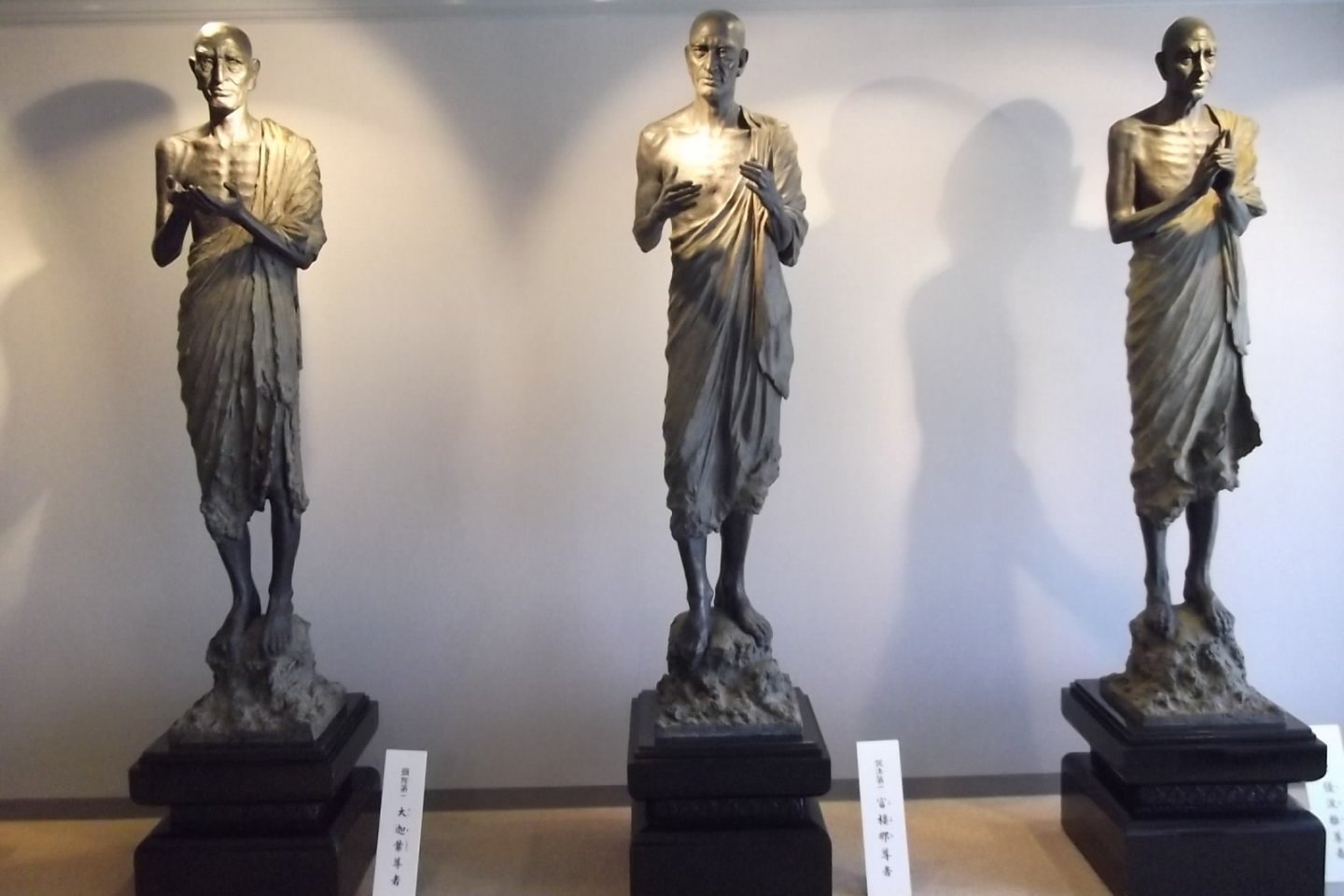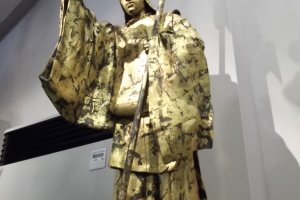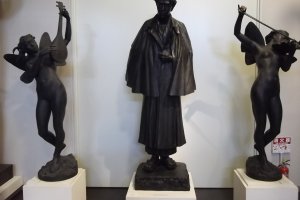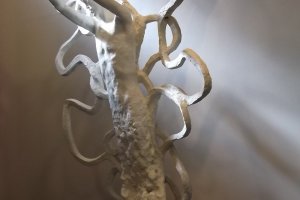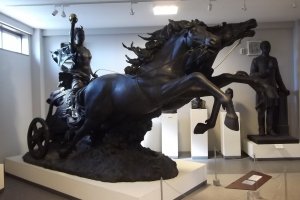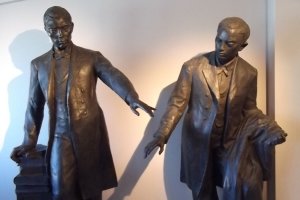Though I hadn't heard of him before I went to Kagoshima, Shinya Nakamura is held up as a pioneer of modern Japanese sculpture. A recipient of the Japanese Order of Culture award, he's best known for his spiritual works, including the Ten Disciples of Buddha Shaka at Yakushiji temple in Nara, and the Vatican's 'Miserere Mei'. Some of his works can be found among the many statues populating Kagoshima City, so it's fitting that a museum dedicated to his work should be here.
Located next to his studio, the museum is a little out of the way in the northern suburbs of the city, on a quiet residential street found between a Lawson's and Akebono liquor store. If you don't have your own transportation, the best way to get there is to take a train to Kamiijuin station, from where it's a brisk twenty-minute walk or a quick taxi ride. The building itself is fairly nondescript, with just a few sculptures at the front signalling that it's anything other then a municipal office or somewhere equally inconsequential. But wait...
If the exterior is unlively, then once you get inside, it's like stepping into someone's derailed hallucination. In the first room alone there's a giant archer aiming at an imaginary enemy behind the far wall, while close by there's a knight in battle armor astride a rearing charger about to maim someone with a flail, and the door to the next room is watched over by two giant guardian kings. If they were all to come to life, as they seem to be threatening to do, the noise and energy would sweep you away.
Elsewhere the atmosphere is equally surreal and dreamlike: there's a complete melting-pot of besuited dignitaries, angel musicians, sumo wrestlers, Buddhist monks, and three figures on charging horses that are clearly about to crash into each other in an almighty tangle of bodies, chariots and weapons. There's almost too much to take in: it really is like being inside some mad genius's whirling mind, such is the diversity and the jarring mix of scales.
One thing that stands out everywhere is the faces. Nakamura took painstaking care in crafting the faces on his sculptures, so that they convey exactly the feelings and inner states of the figures they portray, from the ferocity of his warriors to his monks' meditative peace. It's this that makes his works so compelling and enjoyable.
Many of the sculptures are so large that they were cast in sections so that we can see the joins: it spoils the illusion a bit, but gives an interesting insight into the sculptor's art. All around, though, even on the stairways to the upper floors, there are scores of smaller works: two tiny cowled figures, a Sikh's head, two voles nestling inside an upturned baseball cap, a cowherd unwisely pulling a bull's tail, all crafted to exquisite detail.
On the third floor things become much more sedate. In one room there are original molds for the ten disciples at Nara, standing in contemplation around the walls, while in the next is a replica of Miserere Mei, with a colorful stained glass window serving as a backlight for the Christian figures inside.
Musee Nakamura may not be the easiest place to get to, but it definitely rewards the effort, with a museum packed to overflowing with wild diversity, expert craftsmanship and bravura imagination.
